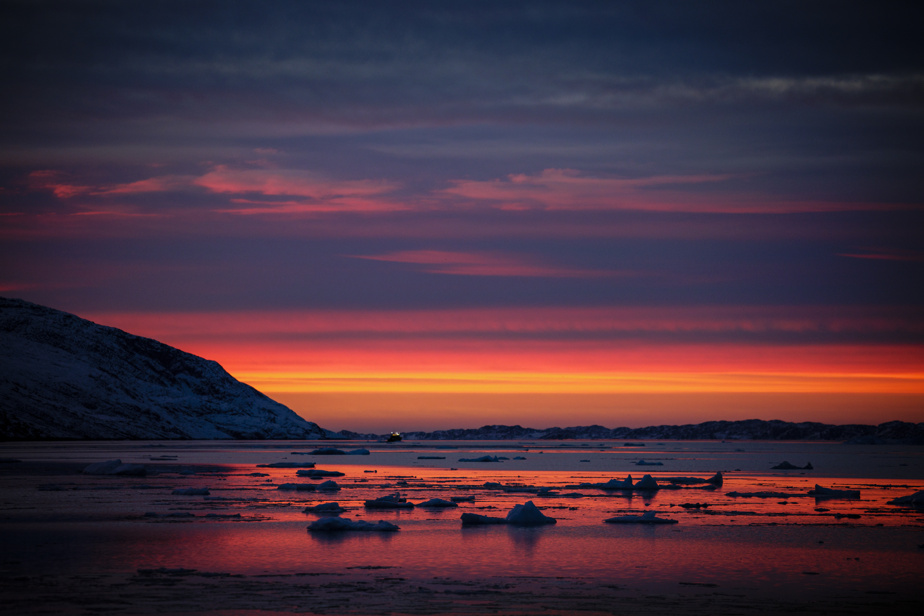(Washington) A new study released Monday provides the clearest evidence yet that Greenland has been largely ice-free for the past million years, as CO levels have declined.2 in the atmosphere were much lower than today.
The implications for humanity are great, as this work raises fears of a greater risk of sea level rise than previously predicted.
“We now know that the entire ice sheet is vulnerable to melting,” Paul Bierman, a professor at the University of Vermont and lead author of the study, told AFP.
The team of researchers discovered remains of plants and insects in an ice core three kilometers deep in the center of the island.
The ice core, named GISP2, was collected in 1993. It had been studied before, but no one had thought until now to look for fossils at its base, because the idea that Greenland had been ice-free in the recent geological past seemed until now very unlikely.
“We literally saw the fossils within the first hour, maybe half hour of working there,” Bierman said.
To their amazement, the researchers found, in a layer of about eight centimeters, willow wood, mushrooms, a poppy seed and even the eye of an insect. The study, published in the journal PNAS, thus suggests that there existed in this place and at that time an entire ecosystem.

PHOTO HALLEY MASTRO, UNIVERSITY OF VERMONT, PROVIDED BY AGENCE FRANCE-PRESSE
In a layer of ice about eight centimetres thick, the researchers found willow wood, mushrooms, a poppy seed and even the eye of an insect.
If the ice in the center of the island had melted, then it was almost certainly absent from most of this vast territory, according to Paul Bierman. Which is not a good omen given the current warming climate.
If current greenhouse gas emissions are not significantly reduced, the Greenland ice sheet could melt almost entirely in the next few centuries or millennia, causing sea levels to rise by about seven metres and wiping out coastal cities around the world.
“Hundreds of millions of people around the world will lose their homes,” the researcher warned.
Small dark spots
In 2016, scientists studied the same sample from 1993, using a dating technique to determine that it could not be older than 1.1 million years.
According to their estimates, if the ice had melted there, then 90% of Greenland would be ice-free.
These conclusions were met with skepticism at the time, because according to the widely accepted theory until then, Greenland had been an ice fortress for several million years.
In 2019, Paul Bierman and an international team reexamined another ice core, this time extracted in 1960 from an abandoned US military base, Camp Century, near the coast of Greenland.
Surprise: it contained leaves and moss. Advanced dating techniques helped them estimate that the disappearance of the ice at this location dates back 416,000 years.
This discovery prompted Paul Bierman to return to the 1993 sample to look for similar traces. They eventually found compelling evidence of melting ice.
“We now know for sure that the ice has disappeared not only at Camp Century, but also at GISP2, in the centre of the ice sheet,” he said.
Halley Mastro, co-author of the study, stressed the importance of continuing to collect ice cores in Greenland, looking for even older organisms whose discovery could have serious implications for the future.
“It’s so obvious once you know it’s there, but if you weren’t expecting it to be there, and you weren’t looking for these tiny little dark spots that float a little differently, you would never have seen them,” she told AFP.
